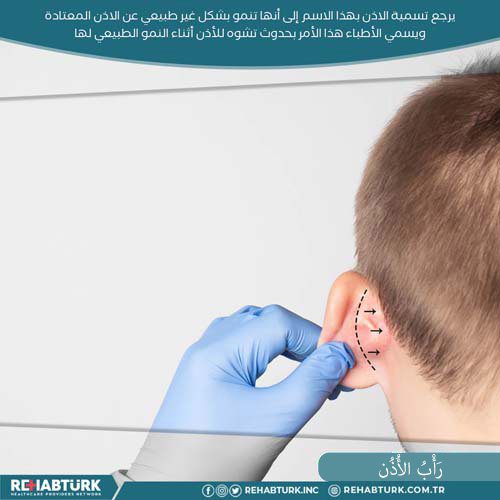Otoplasty in Türkiye
Otoplasty is a type of plastic surgery performed on the ears. During otoplasty, the plastic surgeon can adjust the size, position, or shape of the ears.
Some people choose otoplasty to correct a structural defect in the ear, and others choose to treat their ears that protrude outwards and which they don’t like the way they look.
What is otoplasty?
Otoplasty is sometimes referred to as otoplasty. It is performed on the visible part of the outer ear, called the auricle.

The auricle consists of folds of cartilage covered with skin. It begins to develop before birth and continues to develop through the years after birth. If the ears do not develop properly, the patient may choose otoplasty to correct their size, position or shape.
There are several different types of otoplasty:
Ear enlargement . Some people may have small ears that are not fully developed. They may wish to undergo otoplasty to increase the size of their ears in these cases.
Ear stapling . This type of otoplasty involves bringing the ears closer to the head. It is performed on individuals whose ears protrude clearly from either side of their heads.
Ear reduction . It is performed to treat otomegasis when the ears are larger than normal. People with otosclerosis may choose otoplasty to reduce the size of their ears.
Who is a suitable candidate for otoplasty?
Otoplasty is usually used for ears that are:
- prominent outwards
- larger or smaller than normal
- Abnormal shape due to injury, trauma, or a structural problem from birth
In addition, some people may have already undergone otoplasty and are not happy with the results. They may choose to have another operation for this reason.
Good candidates for otoplasty include those who are:
Five years or older . This is the point at which the ear reaches 90% of its adult size.
Those with good health . Having an underlying condition can increase the risk of complications or affect recovery.
Non-smokers . Smoking can reduce blood flow to the area, which slows the healing process.
stages of the process
* Before the operation: consultation
A board-certified plastic surgeon should be chosen to perform otoplasty.
Above all, the patient needs to obtain medical advice during which the following things are discussed:
Medical history review . Questions about the patient’s medications, surgeries, and any current or past medical conditions should be answered.
Examination . The plastic surgeon evaluates the shape, size and location of the ears. He can also take measurements or photos.
discussion . This includes talking about the procedure itself, the risks associated with it, and the potential costs. The plastic surgeon also wants to know the patient’s expectations for the procedure.
questions . Questions should be asked if something is not clear or when more information is needed. It is also recommended to ask questions about the surgeon’s qualifications and years of experience.
* During the process: how
The process can take between 1 to 3 hours, depending on the details and complexity of the procedure.
Adults and older children may receive local anesthesia as well as a sedative during the procedure. In some cases, general anesthesia may be used. General anesthesia is usually recommended for younger children undergoing otoplasty.
The surgical technique used depends on the type of otoplasty. In general, the operation includes the following:
- Create an incision either at the back of the ear or inside its folds.
- Ear tissue manipulation, which can include removing cartilage or skin, folding and shaping the cartilage with permanent sutures, or cartilage grafts in the ear.
- Close the incisions with sutures.
After the operation: recovery
A bandage is placed over the ears after the procedure. The dressing must be kept clean and dry. In addition, the following should be done during recovery:
- Avoid touching or scratching the ears.
- Choosing the right sleeping position where the head is not supported on the ears.
- Wear clothes that do not have to be pulled over the head, such as button-down shirts.
In some cases, the patient may also need to remove stitches. And inform the doctor about this if necessary. Some types of stitches dissolve on their own.
Common side effects after surgery
Common side effects during the recovery period include:
- Feeling of pain, sensitivity or itching in the ear
- flushing
- swelling
- bruises
- numbness or tingling
The bandage will stay in place for about a week. After they are removed, the patient needs to wear an elastic headband for another 4 to 6 weeks
This strap can be worn at night. The doctor will tell you when to return to different activities.
What risks or precautions should you be aware of?
As with other surgeries, otoplasty has some risks associated with it, and these can include:
- Bad reaction to anesthesia
- Bleeding
- infection
- Ears that are asymmetrical or have abnormal features
- Scarring at or around the incision sites
- Changes in skin sensation, which are usually temporary
- Suture extrusion, when stitches appear on the surface of the skin that need to be removed and reapplied.
Main benefits
Otoplasty is an operation to beautify the ears. They are performed to adjust the size, shape, or position of the ears.
People undergo otoplasty for many reasons. This can include having ears that protrude, are larger or smaller than usual, or have an abnormal shape.
There are several different types of otoplasty. The type used and the specific technique depend on the patient’s needs. Recovery usually takes several weeks.
When considering otoplasty, look for a board-certified plastic surgeon. The focus should be on providers who have many years of experience performing otoplasty and a high satisfaction rate.
How can I book for otoplasty in Türkiye?

- Free medical support on the phone: You will have a dedicated representative for your health condition who is always ready to answer your questions.
- Free consultation with a specialist doctor: Your medical representative will consult with a number of doctors and hospitals to find the best possible treatments.
- Free travel visa arrangement: We will contact the embassy in your country to assist you in obtaining a visa to visit Türkiye.
- Free itinerary planning: We will create a schedule for your medical trip to Türkiye.
- Free translation of documents and reports: We will translate medical documents and reports into Turkish on your behalf.
- Free support and monitoring: We will monitor the stages of treatment and be by your side every step of the way.
- Free instant translation: We will be with you during the treatment stages to provide translation between you and the medical team.
- Free accommodation and transportation coordination: We will book accommodation for you and your companions in Türkiye, along with transportation services.
Contact REHABTÜRK doctors for more information about the procedure and to evaluate your medical condition.
